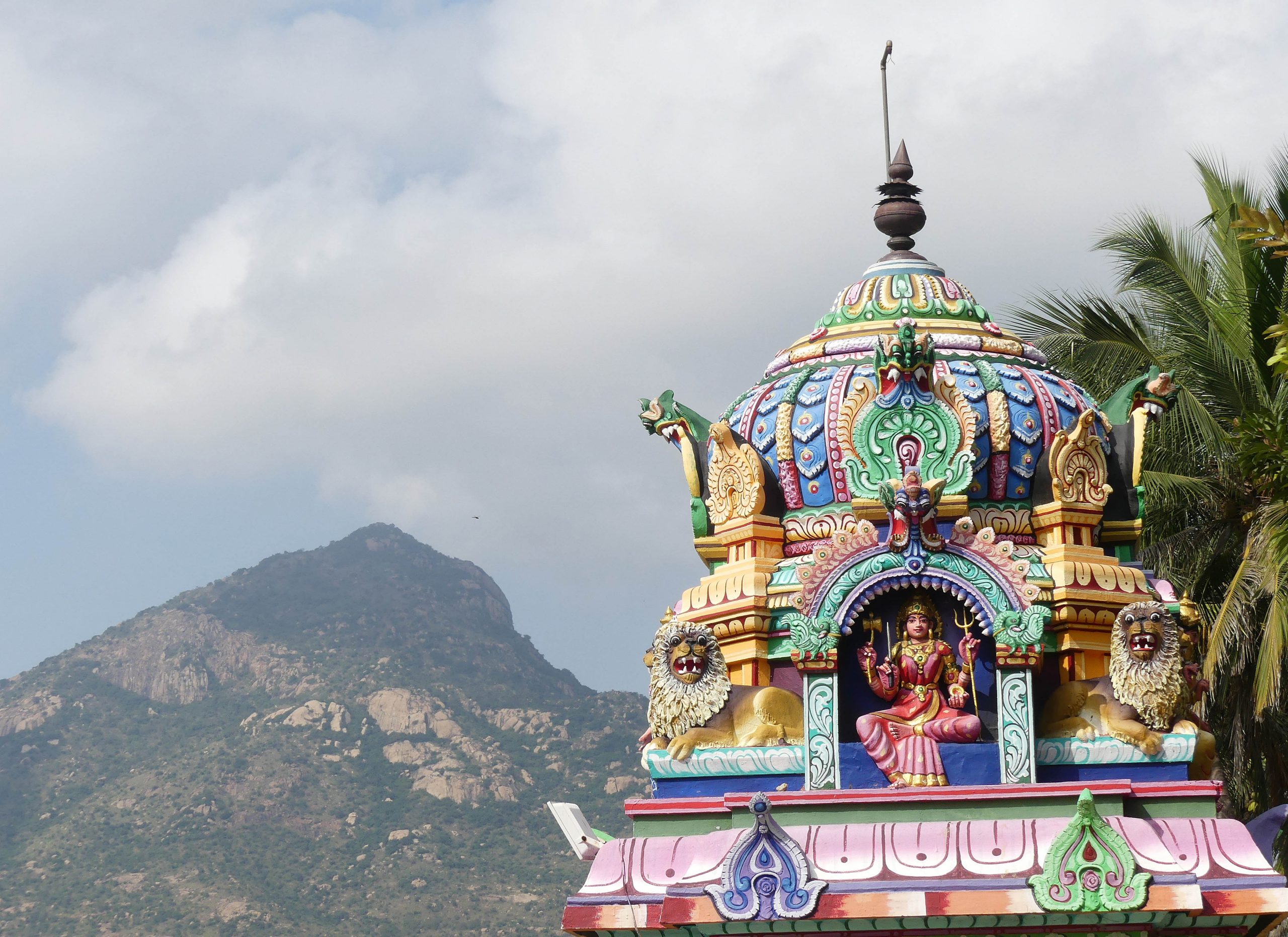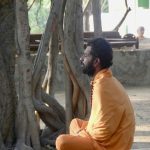
Montagne Anrunachal, Tiruvunnalai, Inde
At the beginning of January, I came back to the ashram of Ramana Maharshi (1879 – 1950), the sage of Tiruvannamalai who forever left a mark on contemporary India. As soon as I arrived, I went to the samadhi – the tomb where his body rests. It was in the middle of the afternoon, at the time where the brahmans were lighting the oil lamps for the evening prayer. Just like every single day, the pilgrims were religiously walking around the samadhi. The steady sound of their steps wasn’t bothering in the least the ones who remained silent and still. I sat down among them, facing the guru’s portrait and his unforgettable gaze. I let contemplation take possession of my being as benedictine Henri Le Saux’s description of his encounter with the Maharshi resurfaced in my mind: “In this sage of Arunachala and of this time, it was the unique sage of eternal India that appeared to me, it was the continuous lineage of his sages, his renunciants, his seers, it was as if the very soul of India was piercing through the most intimate parts of my own soul, and together they entered a mysterious communion. It was a call that ripped everything apart, that split everything, that opened a great abyss…”
The next day, I climbed up to the Virupaksha cave and to the Skanda ashram where Ramana had lived from 1900 to 1922. At sixteen years old, the young brahmin of the Tamil Land experienced a dazzling spiritual breakthrough in which he realized that the mystery he was carrying within himself was the Absolute, without birth nor without death, ocean of bliss, undying light. Drunk with the Eternal, he left everything to go into the depths of Arunachala, until his disciples had to beg him to live into the ashram they had built for him. However, whether in his solitary cave or surrounded by countless crowds, the master had only one answer: a word of perfect silence, calling us to the depths of the heart. In that sense, Ramana was like a new manifestation of Dakshinamurti, the young guru in Hindu tradition of whom the silence overflowing with internal joy is the ultimate teaching, greater and more powerful than all the Scriptures put together.
From the solitude of the caves to the Vedic chants close to the samadhi, from meeting Ramana’s grandnephew to the pilgrimage around the sacred mountain, my recent arrival in Tiruvannamalai only had one objective: dive deeper and deeper into the silence the sage had left us. In doing so, I joined the continuous flow of all of those who, for a century, had kept coming to the ashram to benefit from his nurturing presence, transcending time and space. I was there, among the humble farmers full of trust towards their immortal guru, among the brahmins whose parents used to serve Ramana, among Indian intellectuals on a mission to find religious authenticity, and among the faithful believers for whom Arunacha was a spiritual leading light. “Overwhelming feeling of unity: all at his feet, so different from one another – through our psyches, our reminiscences, our callings: Hindus, Muslims, Christians, unbelievers, we all felt part of the family.” (Jules Monchanin).
- Ramana Maharshi, Tamil Nadu
- Talil Nadu
- Montagne Anrunachal, Tiruvunnalai, Inde


